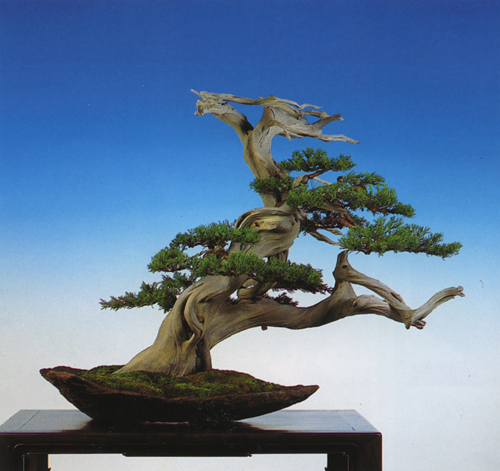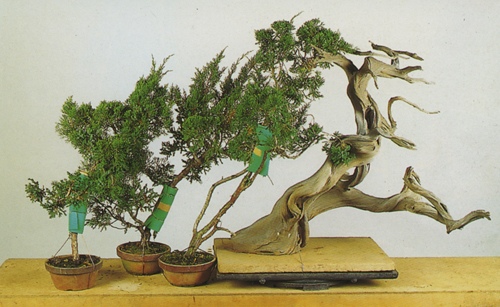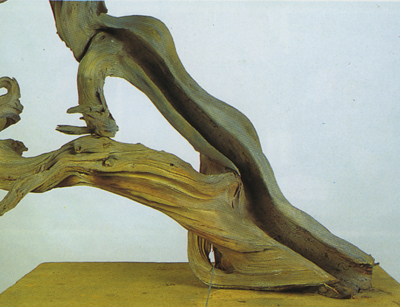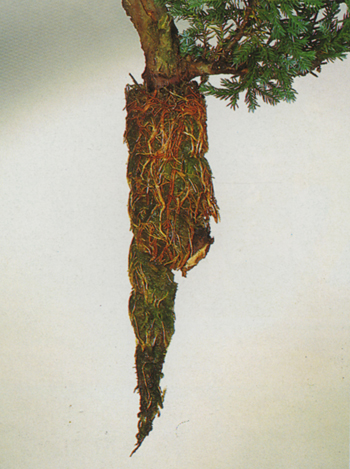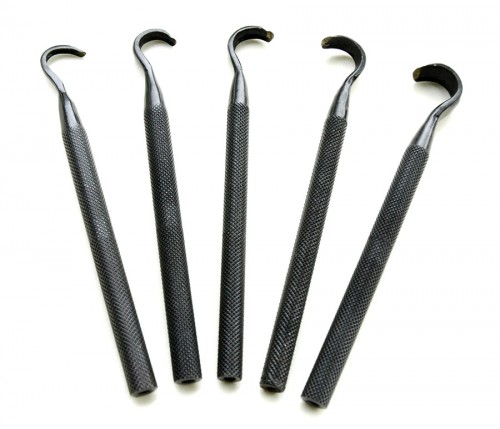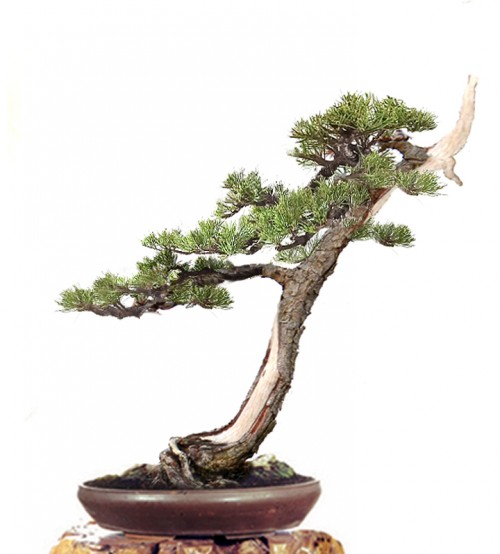
Robert Steven’s simulation of a Japanese black pine that was submitted by Tom Duong (see below for Tom’s original).
Where’s yours?
Email us a photo of your bonsai and we’ll submit it to Robert Steven for a critique. So far about ten people have dared and have learned something about their bonsai in the process. Now it’s your turn.
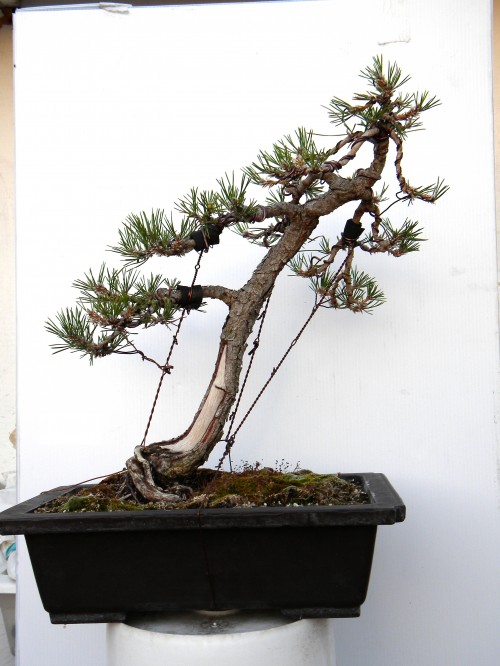
Tom’s original photo that was submitted to Robert. Tom also submitted a back, left, right and top view. Even though Robert requested these, very few submissions have included them. While we are on the topic; when photographing bonsai it’s always a good idea to include the whole pot in your photo and to try to make the background as clean and uniform as possible.
Robert’s critique
Issues:
Although there is shari on the trunk, this bonsai looks young. This is because it doesn’t have the ramification (branching) structure of a mature tree. Also, the foliage is not well trained and refined. Although the artist has tried to bend down the branches to suggest an old tree, the apex is still that of a young tree and doesn’t fit with the overall design.
There’s a lack of visual balance due to the improper placement of the crown in relation to the trunk line and movement and the branch formation.
The pot is too big.
Solutions:
The shari on the trunk looks like an accident rather than suggesting an aging effect. In order to create a more natural look, I would turn the apex into jin and connect that with a shari that winds down the trunk and links with the lower shari.
Form a flatter apex to impart a more accurate story of how this tree would be formed in nature. There are natural forces that kill the apex which creates the jin. This jin starts dying down creating the shari. These same natural forces also flatten the crown and bend down the branches.
Develop the ramification (fine branching) so the tree will look mature.
Improve the composition to obtain better visual balance. (Robert doesn’t elaborate this point, but I think if you look at his simulation, you’ll get his drift).
Use a smaller pot.
General comments
There is more than one way to design any bonsai and my critiques and recommended solutions might not always fit your taste because of personal preferences. But I always try to give my opinion based on artistic and horticultural principles.
To understand my concepts better, please read my books Vision of My Soul and Mission of Transformation which are available at Stone Lantern.
You can also visit my bonsai blog.
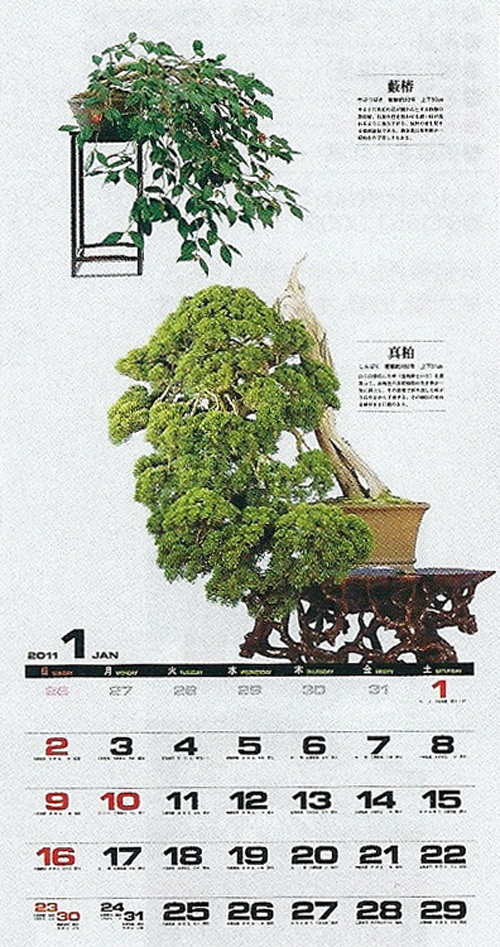
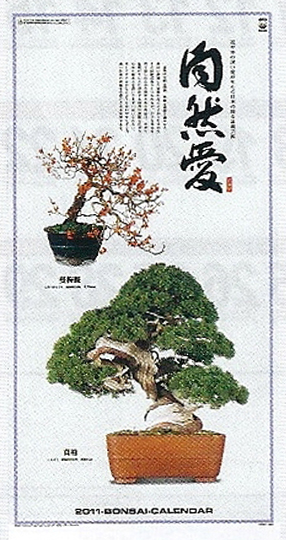 Cover page. Also a little fuzzy here, but the real thing is not fuzzy at all.
Cover page. Also a little fuzzy here, but the real thing is not fuzzy at all. 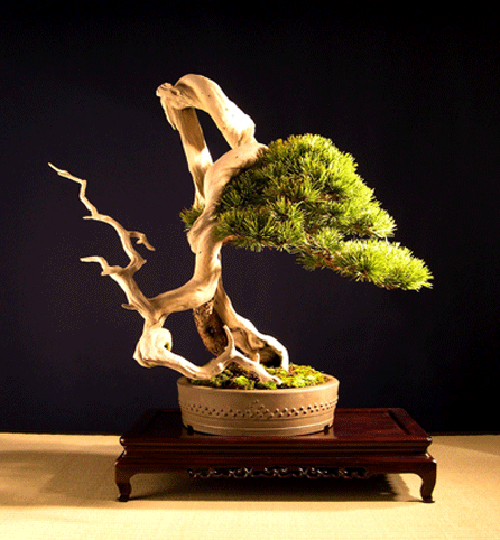
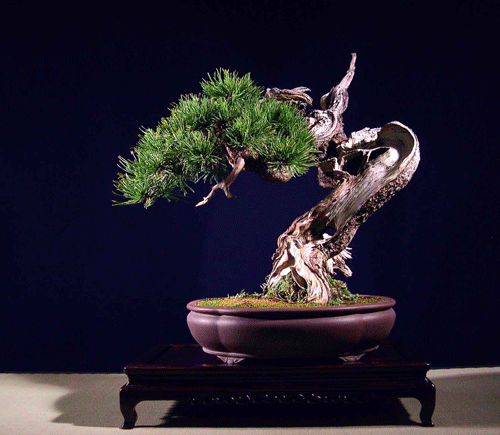
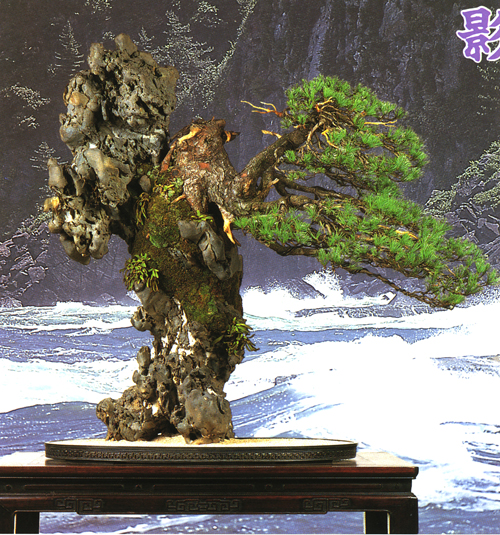
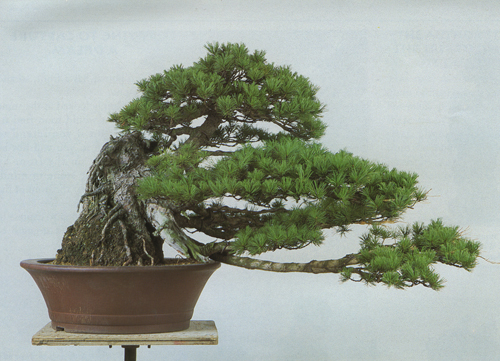
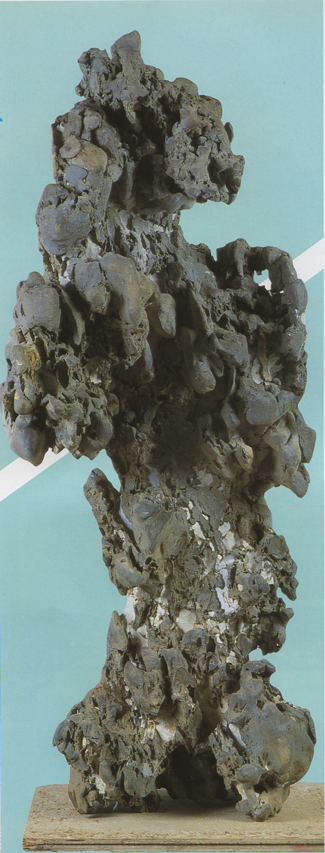 The rock.
The rock. 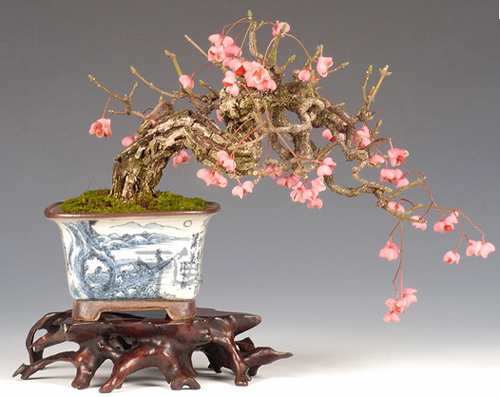
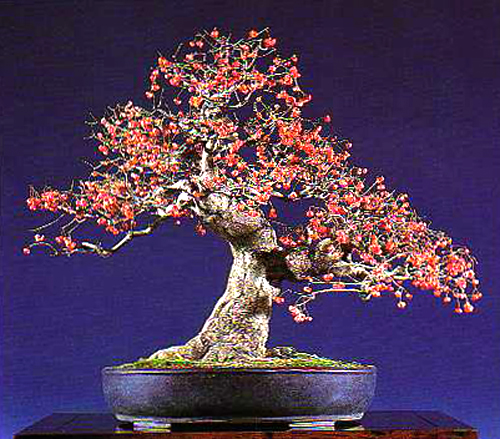
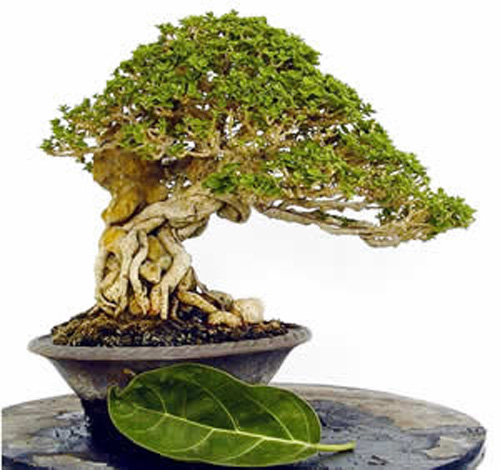


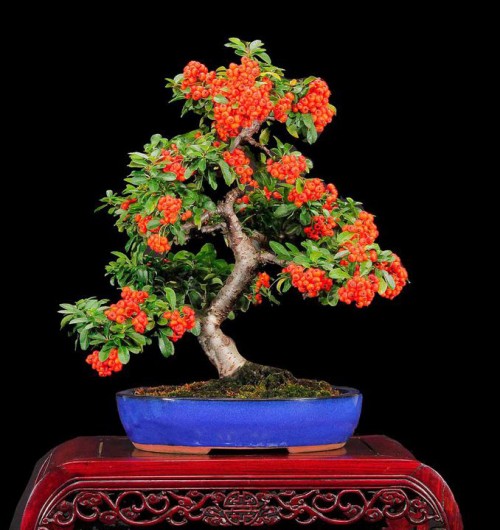
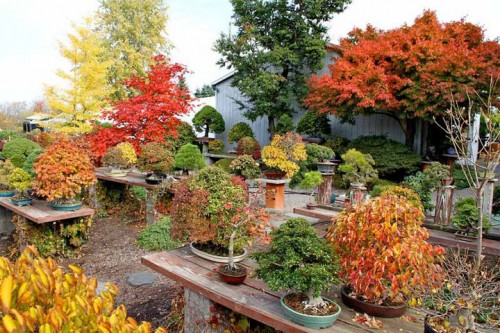


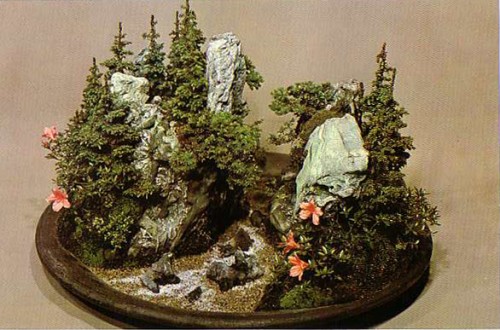
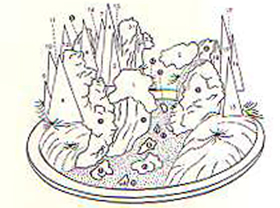
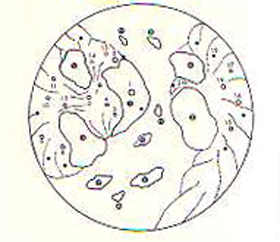 This bird’s eye view shows the placements of the rocks and footprint of the hills. Yes, the tray is really completely round. Round tray-style pots this size are very unusual. You’ll see extra large ovals and rectangles for sure, but when was the last time you saw a monster round tray-style pot?
This bird’s eye view shows the placements of the rocks and footprint of the hills. Yes, the tray is really completely round. Round tray-style pots this size are very unusual. You’ll see extra large ovals and rectangles for sure, but when was the last time you saw a monster round tray-style pot?